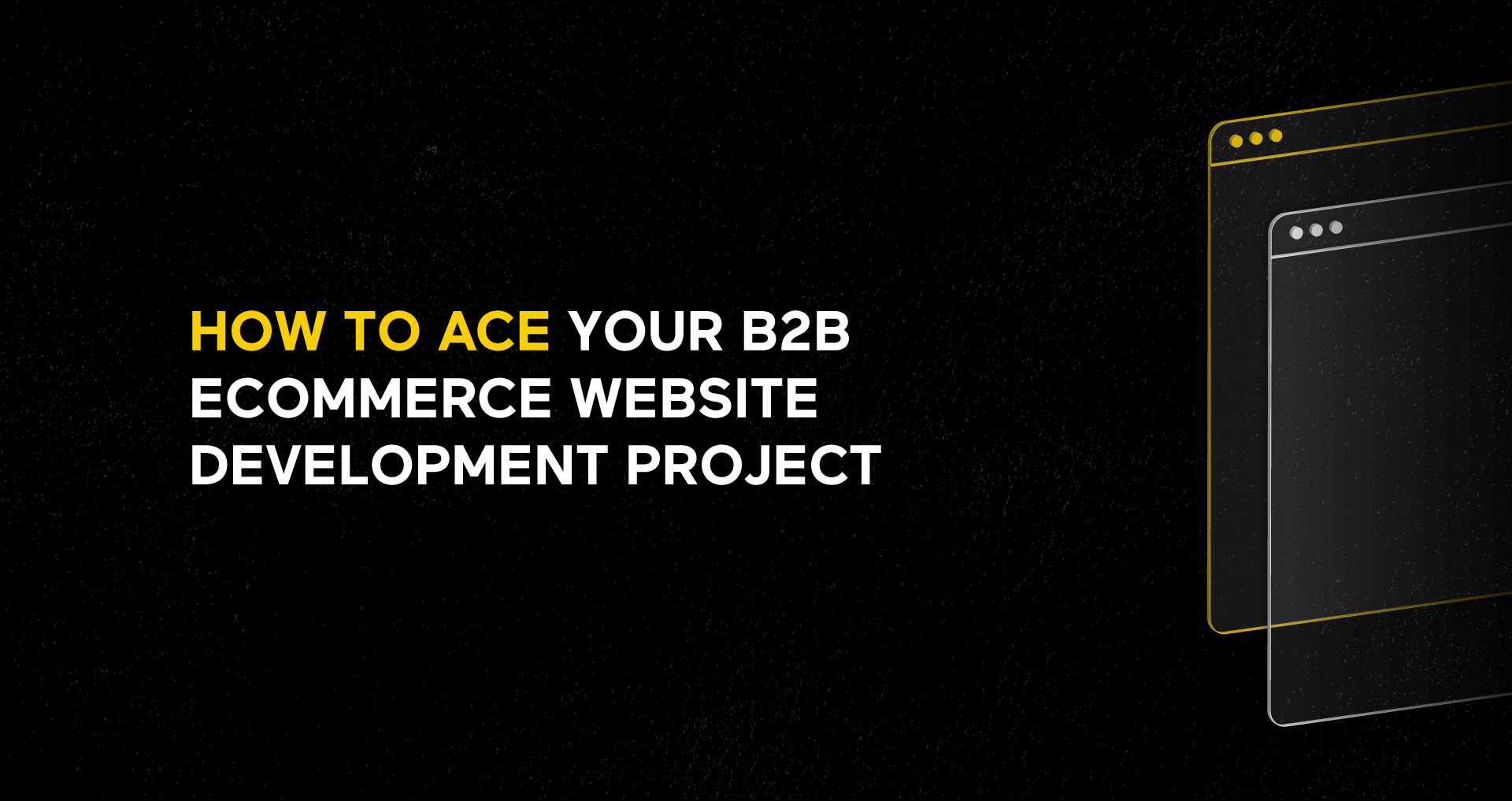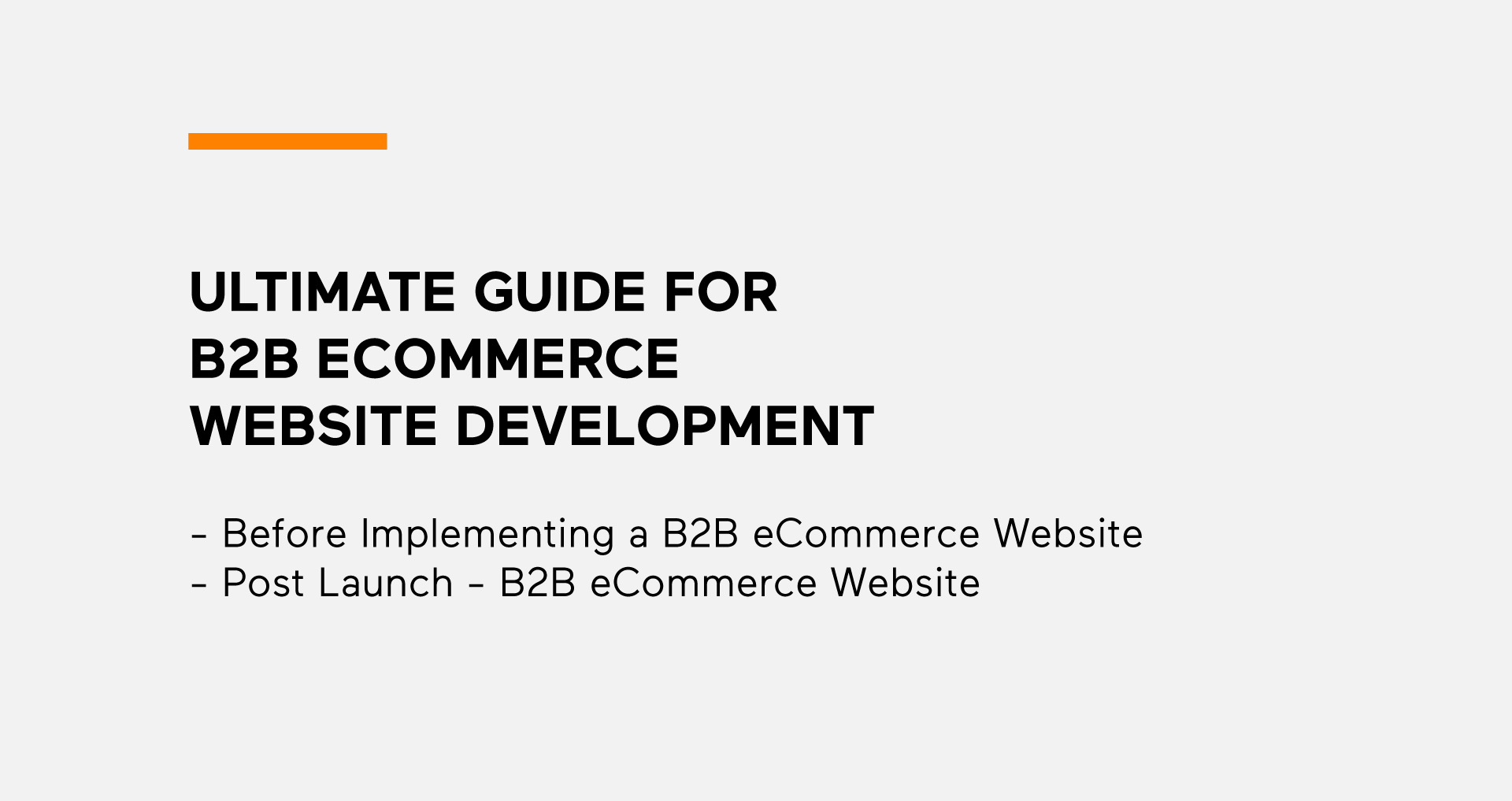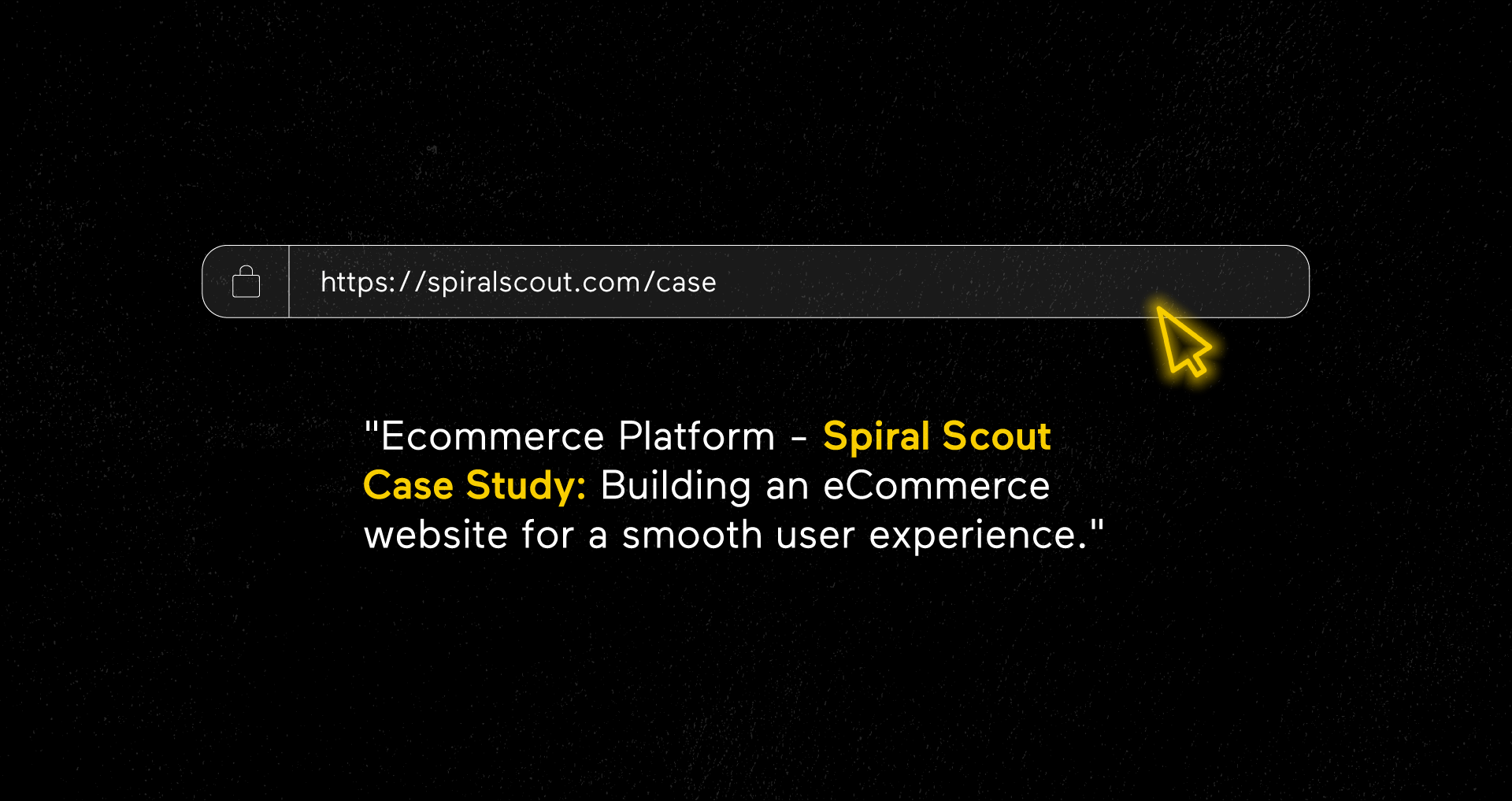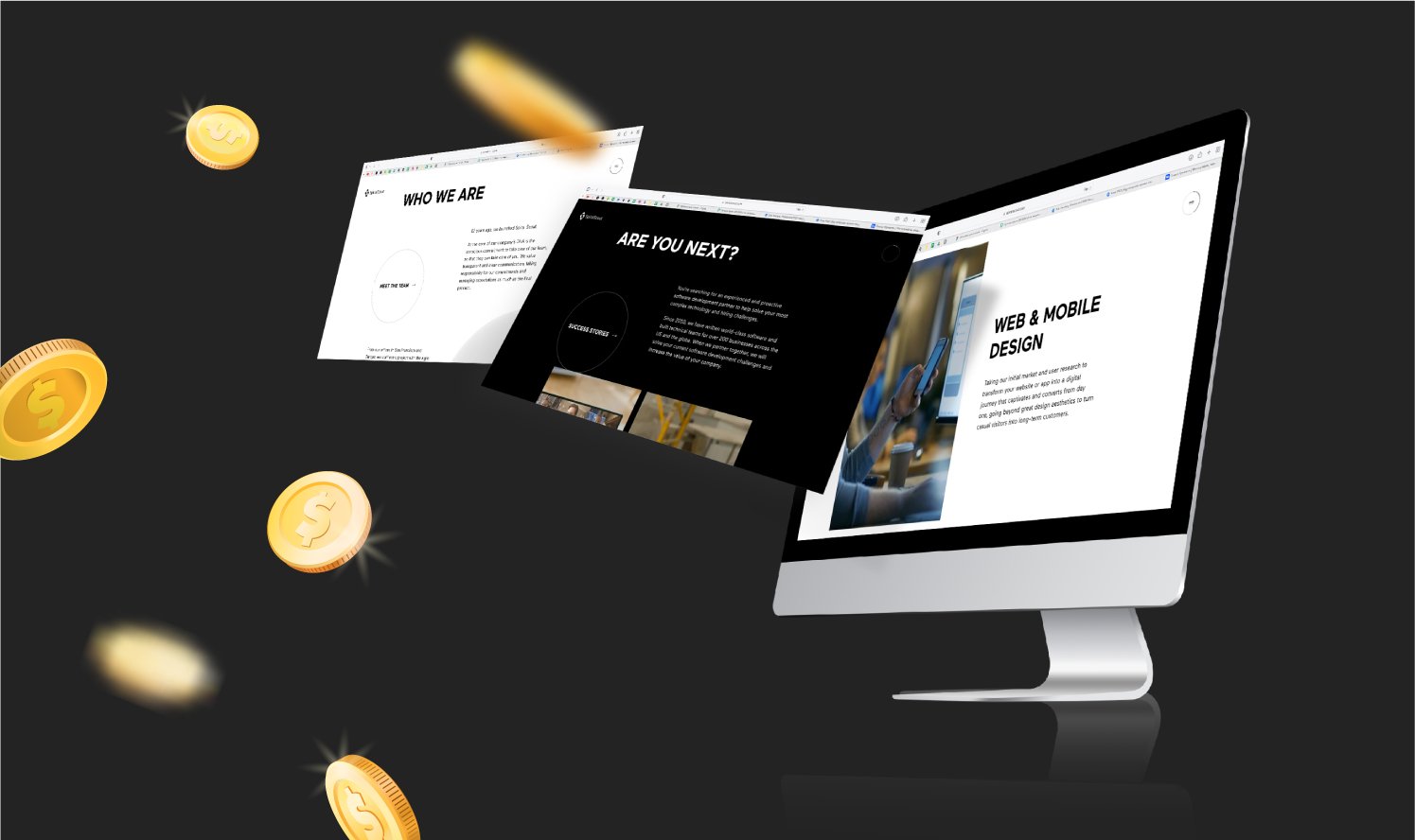Creating a successful B2B eCommerce website requires careful planning and execution. It’s a significant step forward for businesses aiming to engage with wholesale and B2B customers effectively. By leveraging B2B eCommerce solutions, businesses can ensure a seamless user experience and robust functionality.
Developing a B2B eCommerce website involves understanding your business goals, audience needs, and the essential features required for success. This guide will help you navigate the complexities of B2B online store development, ensuring you avoid common pitfalls and create a platform that meets your business objectives.

How To Approach B2B Website Development from a Marketing Perspective
When it comes to eCommerce website development, understanding your audience is crucial. Start by identifying who they are, what they want, and their pain points. This knowledge allows you to develop a strategic plan that addresses their needs and enhances their experience.
- User Experience: Ensure your website is easy to navigate and engaging. A positive user experience increases the likelihood of conversions and repeat visits. Listening to your customers, and then carefully planning your later phases based on customer feedback may all be things that you have heard but actually being able to implement them and build upon a successful B2B website is another thing.
- Content Strategy: Create compelling content that speaks to your audience’s pain points and offers solutions. This approach not only informs but also builds trust. Starts with understanding your business goals, your must-have features (vs nice to have, move those to Phase 2), and your audiences’ needs. Who are they? What do they want? What are their pain points? Are they used to doing business over the Internet? Once you understand your audience, you can start developing a strategic plan and website that appeals to them and specifically addresses their business needs while hopefully reducing the manual workload or customer service requests your team is fielding.
- SEO Optimization: Going through all the steps in B2B website development is pointless if no one can find your website from a Google search once you launch it because you launched with a tag on your site that could be blocking the search crawlers (a painful mistake I have seen). Optimize your site for search engines from the start. Use the right keywords, maintain good internal linking, and ensure your website structure is search engine-friendly.
By following these strategies, you can create a B2B eCommerce website that resonates with your audience and supports your business goals.
Ultimate Guide for B2B eCommerce Website Development

Whether you’re revamping an existing site or building a new one from scratch, this guide covers the key elements of a successful wholesale eCommerce development project:
- Research Your Target Audience: Understanding your audience is the foundation of effective website development.
- Design an Effective User Flow: Create a user-friendly design that guides visitors seamlessly through the purchasing process.
- Develop the Right Features: Prioritize must-have features and consider additional enhancements for future phases.
For more insights, explore eCommerce trends and strategies to boost your sales and increase conversions.
Before Implementing a B2B eCommerce Website
Understanding the necessity of a B2B eCommerce website is crucial. Start by identifying your business goals and the features needed for Phase 1 versus those that can wait for Phase 2. Prioritize ruthlessly—cutting 30% from your initial feature list can help you launch sooner and save costs. It’s essential to research your target audience, understand their needs, and communicate these effectively to your team.
Key Questions to Consider:
- What are your business goals?
- Who is your target audience?
- What are your competitors doing well or missing?
- What products or services will you offer?
- Do you need customer support or a sales team?
- Are there any third-party or legacy systems to integrate?
- Have you documented all desired features and functionalities?
- Do you have the necessary resources for development?
Answering these questions will guide you in developing a clear strategy for your B2B eCommerce website.
Designing an Effective User Flow
The user flow is the process that your users will go through when they use your website. It starts from the moment they land on your homepage, a product page, or blog article and ends when they make a purchase or complete another desired action (or don’t sadly). A well-designed user flow is critical, especially for B2B eCommerce websites, where buyers are often busy. Ensure your website is easy to navigate and meets user needs efficiently. Use tools like “Post-It” notes to map out the user journey and identify any gaps or dead ends. Once you have all the page names written on a number of Post-It notes you can take that list and give it to a designer to tell them about all the screens that you think you will need to be designed and show them roughly how all the screens make up the architecture of the site.
Essential Features for B2B eCommerce Websites
To stay competitive, regularly review your site and consider enhancements. Essential features include:
- User-Friendly Interface: The first and arguably most important feature on this list is a user-friendly interface. In order for customers to want to do business with you online, they need to be able to easily navigate your website and find what they’re looking for. Ensure ease of navigation on both desktop and mobile.
- Search Functionality: Another essential feature for any eCommerce website is the search functionality. This is especially important for B2B sites which tend to carry a larger inventory than B2C sites. Allow quick searches by keyword, category, SKU, or item number.
- Detailed Product Pages: Once a customer has found the product they’re looking for, it’s important that your product pages provide all the information they need in order to make a purchase decision. Provide comprehensive product information and contract-based pricing.
- Specific Purchasing and Shipping Options: Specific purchasing and shipping options are a must for any B2B eCommerce website. Options to perform quick reordering, bulk purchasing, sharing of carts with another user, quote management, digital payment options, or creating a PO and quote management interfaces are super important not to overlook. Even some businesses often have specific shipping requirements that need to be accommodated. In order to meet the needs of your customers, you should offer a variety of features that directly address what you are selling and how your customers need to be able to buy it.
- Robust Customer Support: Last but not least, it’s important to have robust customer support in place in order to ensure a positive experience for your customers. Offer live chat, phone support, or a FAQ section to maintain customer satisfaction.
Post-Launch Considerations
Once launched, continue to refine your site based on user feedback and analytics. This will help you ensure that your site always addresses the needs of your customers and you are not building something that customers will end up not needing or using. Key tasks include:
- Check Google Analytics: Understand traffic sources and user behavior. This will give you a good idea of how much traffic your site is getting, where that traffic is coming from, and what pages they’re spending the most time on. This information can be invaluable in helping you to improve your website and make changes based on customer behavior. A good engineer will help you set up event tracking so you can see more specifically what users are doing on your site once they get there.
- Evaluate Conversions: In addition to checking your website traffic, you should also evaluate your conversion rate through eCommerce tracking that you can even set up in Google Analytics or another reporting tool. This will tell you how many visitors to your site are actually converting and doing an action you want them to, whether that’s making a purchase, signing up for a newsletter, or downloading a white paper. If your conversion rate is low, it indicates that something on your site needs to be improved. Use tools like HotJar for session recordings to improve user experience.
- Collect Customer Feedback: Another important thing to do after launching your B2B eCommerce website is to collect customer feedback from trusted customers (especially ones who are not your friends or are going to paint a rosy picture just to make you feel good that you have actually launched your site instead of telling you what you need to hear). This can be done through HotJar, surveys, customer reviews, or even social media. Pay close attention to what customers are saying about their experience on your site and use this information to make necessary improvements.
- Monitor Competition: Finally, don’t forget to keep tabs on your competition. Keep an eye on what other B2B eCommerce websites are doing to stay ahead of the curve. This way you can quickly adapt and make changes to your own site if necessary.
Popular eCommerce Platforms
Explore platforms like Shopify, Magento Commerce, and WooCommerce for robust eCommerce solutions. Each offers unique features suited to different business needs.
- Shopify is one of the most popular eCommerce platforms out there. It is easy to use and can be customized to fit the needs of your business. With Shopify development, you get a wide range of features, including inventory management, shipping, and tax calculations as well as integration of 3rd party software on Shopify Plus. They just launched their B2B offering and it is something that integrates much better with their DTC offering.
- Magento Commerce is another popular eCommerce platform. It is a bit more complex than Shopify but offers a lot of powerful features. Magento Commerce is perfect for businesses that need a robust platform with advanced features.
- WooCommerce is another popular open source eCommerce platform that has a wide range of features and tools. WooCommerce is perfect for businesses of all sizes, from small businesses to enterprise-level companies that are built on top of WordPress and are supported by a huge community of plugins and developers.
- 3DCart is a powerful eCommerce platform that offers a wide range of features and tools. 3DCart is perfect for businesses of all sizes, from small businesses to enterprise-level companies.
Spiral Scout Case Study: PIB Sales

- Spiral Scout was approached by PIB Sales, a global leader in the ball bearings space that was looking to update PIB Sales’ existing B2B site and tech stack in order to scale and make its website easier to manage. Our developers devised a three-step plan to achieve the project aims:
- Write down all the initial requirements, how the different systems communicated (i.e. how their internal ordering system (ERP) synced with a third-party vendor and PIB’s main site), and design all the major screens and user flows. Our developers achieved this by writing a custom script to connect the two systems.
- A migration plan for all existing customer order history and data. Our developers used a combination of data mining and manual entry to accomplish this. This ensured that no customer data was lost in the transition and that PIB wouldn’t be fielding a ton of customer service requests.
- Building a microservice that would be the middle layer that could be used to exchange data between the customer’s application and the main site to speed up the site in general. When we tested the new site after it was released, the product page went from loading in 12 seconds to loading completely in under 2 seconds.
Why Choose Spiral Scout for B2B eCommerce Development
- Expert Developers: Our team is skilled in building B2B eCommerce sites with a focus on best practices and latest trends.
- Transparent Communication: We maintain open communication with regular updates.
- Flexible Hiring Model: Pay only for the services you need, making it cost-effective.
If you’re looking for a dedicated team to build your B2B eCommerce website, consider Spiral Scout. We’re here to discuss your project requirements and provide the best solutions.



